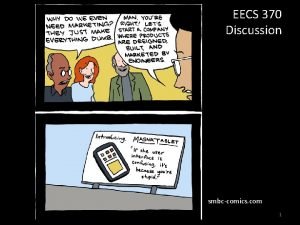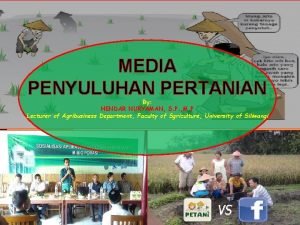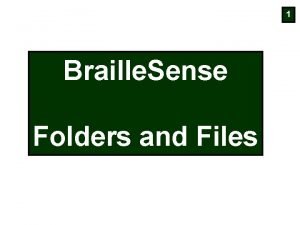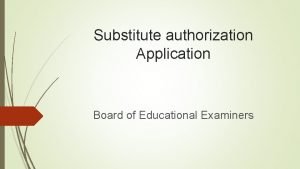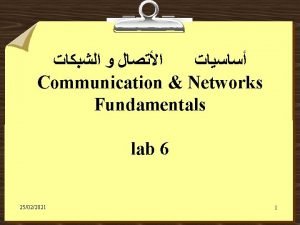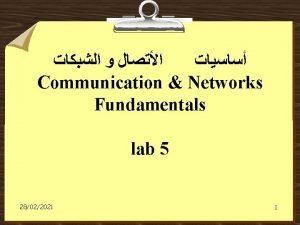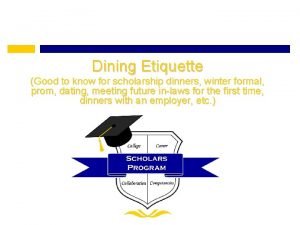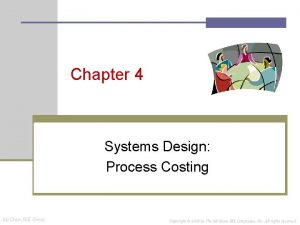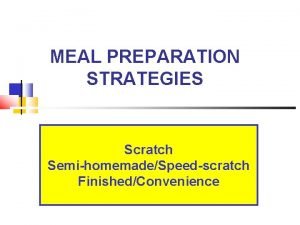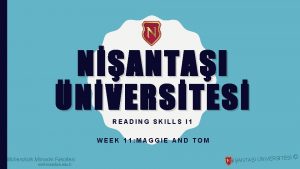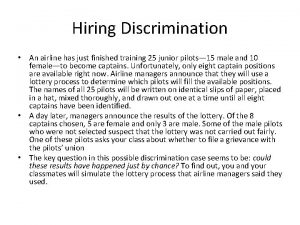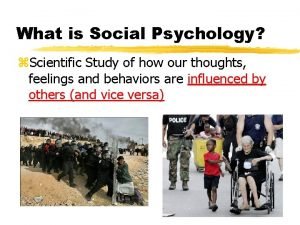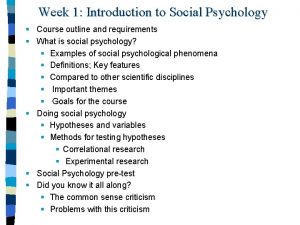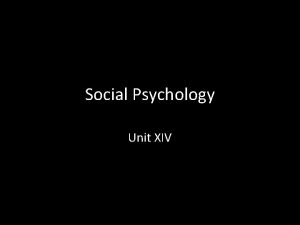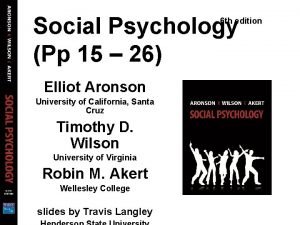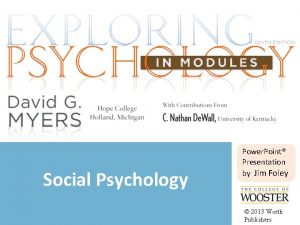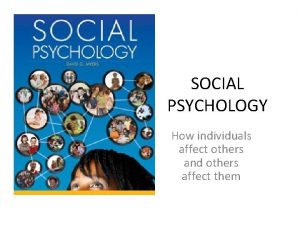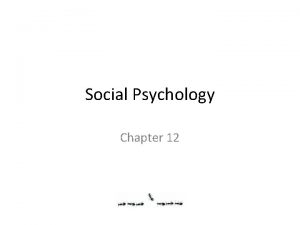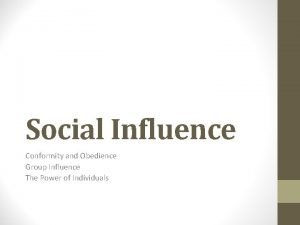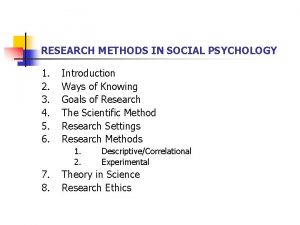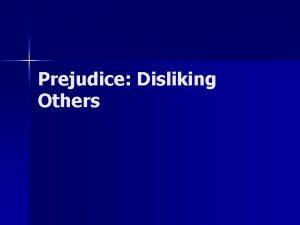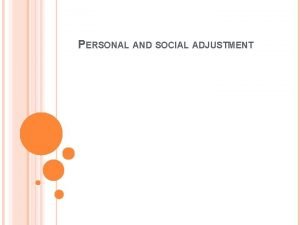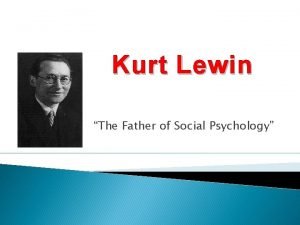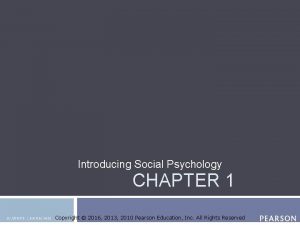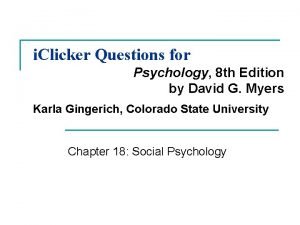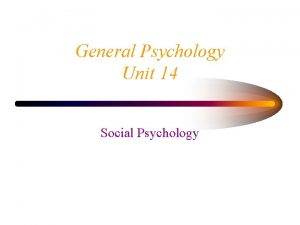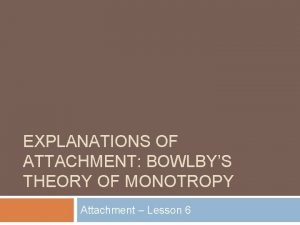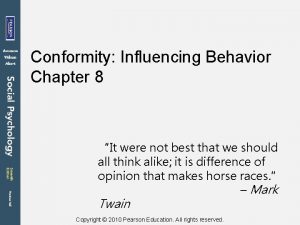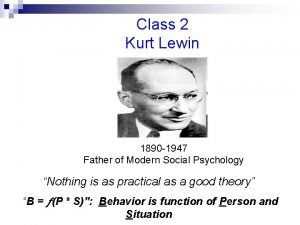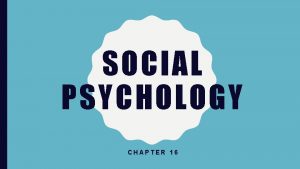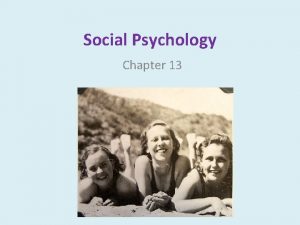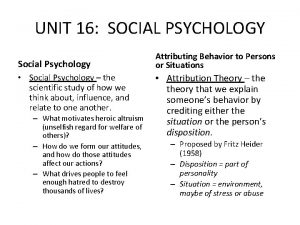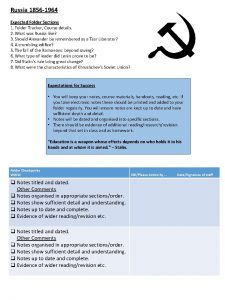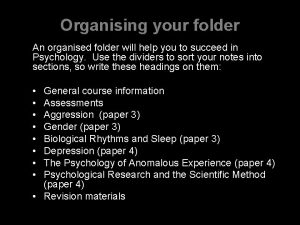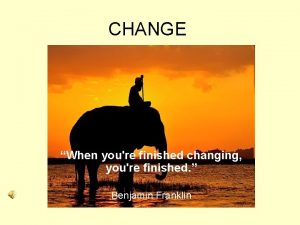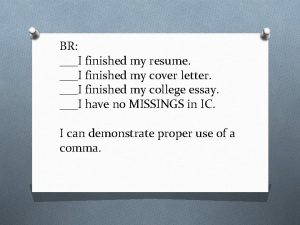Social Psychology When finished put scantron in folder

































































































- Slides: 97

Social Psychology When finished put scantron in folder Pick up a cal and packet 1

Focuses in Social Psychology Social psychology scientifically studies how we think about, influence, and relate to one another. 2

Attributing Behavior to Persons or to Situations http: //www. stedwards. edu Attribution Theory: Fritz Heider (1958) suggested that we have a tendency to give causal explanations for someone’s behavior, often by crediting either the situation or the person’s disposition. Fritz Heider 3

Example The pizza delivery guy is late. • Dispositional? • Situational? 4

Fundamental Attribution Error The tendency to overestimate the impact of personal disposition and underestimate the impact of the situations in analyzing the behaviors of others leads to the fundamental attribution error. 5

Effects of Attribution How we explain someone’s behavior affects how we react to it. 6

Actor-Observer Effect • The tendency to attribute the causes of one's own behavior to external factors while attributing other's behavior to internal factors. 7

Self-Serving Bias • Success is a result of internal factors • Failure is a result of external factors. 8

Hand In Your Psych. Sim • Group 1 • Chloe, Matt, Meghan, Abby • Group 2 • Chris, Kate, Brooke Grace • Group 3 • Graeme, Clarice, Lizzy, Zach • Group 4 • Syd, Hannah A. , Jon, Katelynn • Group 5 • Eshaan, Hannah D. , Yostina, Jacob • Group 6 • Archi, Max, Jeremy, Alexis, Colin

Hand In Your Psych. Sim • Group 1 • Caroline, Emily, Aditi, Luke • Group 2 • Wyatt, Hannah Ethan, Bridget • Group 3 • Claire, Casey, Alex Macie, Rebecca • Group 4 • Michael, Patrick Kathryn, Rae • Group 5 • Mackenzie, Sam Charles, Garrett • Group 6 • Alana, Jacob, Emma, Ciara, Nataliya

Power of the Situation • Abu Ghraib Prison • 2004 prison in Iraq • U. S. military guards stripped prisoners stacked them in piles, prodded them with electricity, taunted with attack dogs

Role Playing Affects Attitudes Zimbardo (1972) assigned the roles of guards and prisoners to random students and found that guards and prisoners developed roleappropriate attitudes. Phillip G. Zimbardo, Inc. 12

Hand in your SIM • Sit in your groups.

Bystander Effect • When there is an emergency, the more bystanders there are, the less likely it is that any of them will actually help. • Instead there is a diffusion of responsibility • 13: 22 D

Just World Phenomenon • Refers to people’s tendency to believe that world is just and that people get what they deserve • Leads to behavior that tries to rationalize injustice often blaming the victim

Actions Can Affect Attitudes Why do actions affect attitudes? One explanation is that when our attitudes and actions are opposed, we experience tension. This is called cognitive dissonance. 16

Cognitive Dissonance Book Example 17

Better Example I am going to die anyways

Deindividuation The loss of self-awareness and self-restraint in group situations that foster arousal and anonymity. Mob behavior 19

• Gerard is a Sophomore and has been invited to a costume party by an upperclassmen on his track team. At the party a team Captain is making fun of a freshman girl in front of about 30 other students because she did not wear a costume. It got so bad that she became visibly upset and left the party. Explain how each of the following may have contributed to the events at the party. • Bystander Effect • Fundamental Attribution Error • Deindividuation • Just World Phenomenon • Cognitive Dissonance

Social Influence The greatest contribution of social psychology is its study of attitudes, beliefs, decisions, and actions and the way they are molded by social influence. NON SEQUITER © 2000 Wiley. Dist. by Universal Press Syndicate Reprinted with Permission 21

Conformity & Obedience Behavior is contagious, modeled by one followed by another. We follow behavior of others to conform. Other behaviors may be an expression of compliance (obedience) toward authority. Conformity Obedience 22

Obedience • the act of carrying out commands, or being actuated

Obedience • Obedience is a form of social influence where an individual acts in response to a direct order from another individual, who is usually an authority figure. It is assumed that without such an order the person would not have acted in this way.

B Obedience Stanley Milgram designed a study that investigates the effects of authority on obedience. Start at 1: 55 Courtesy of CUNY Graduate School and University Center People comply to social pressures. How would they respond to outright command? Stanley Milgram (1933 -1984) 3: 05 25

Both Photos: © 1965 By Stanley Miligram, from the film Obedience, dist. by Penn State, Media Sales Milgram’s Study: 7: 27 26

Milgram’s Study: Results 27

The Human Experience Obedience: Power of the Situation: Bystander Effect:

Group Influence How do groups affect our behavior? Social psychologists study various groups: 1. 2. 3. 4. One person affecting another Families Teams Committees 29

Hand in your SIM

Conformity • process by which an individual's attitudes, beliefs, and behaviors are influenced by other people

Evolution of the Hipster

A


The Chameleon Effect- the tendency to mimic behavior 35

Group Pressure & Conformity An influence resulting from one’s willingness to accept others’ opinions about reality. William Vandivert/ Scientific American 36

A B C

A B C

A B C

A B C

Group Pressure & Conformity The Asch Experiment Suggestibility is a subtle type of conformity, adjusting our behavior or thinking toward some group standard. 41

Conditions that Strengthen Conformity 1. 2. 3. 4. 5. 6. 7. One is made to feel incompetent or insecure. The group has at least three people. The group is unanimous. One admires the group’s status and attractiveness. One has no prior commitment or response. The group observes one’s behavior. One’s culture strongly encourages respect for a social standard. 42

Informative Social Influence Baron et al. , (1996) 43

Reasons for Conformity Normative Social Influence: Influence resulting from a person’s desire to gain approval or avoid rejection. A person may respect normative behavior because there may be a severe price to pay if not respected. Informative Social Influence: influence resulting from one’s willingness to accept others opinions about reality The group may provide valuable information, but stubborn people will never listen to others. 44

Informative Social Influence Baron and colleagues (1996) made students do an eyewitness identification task. If the task was easy (lineup exposure 5 sec. ), conformity was low in comparison to a difficult (1/2 sec. exposure) task. 45

Social Norms- unwritten rules that we follow • • • Personal space Not talking to strangers Turning around on the elevator Eye contact rules Look up all the time Whisper when you talk Push the buttons for floors you are not going to Say goodbye when you answer the phone Cheering people on for doing their jobs Racing people on the canal Wave with two hands Pay with change at a restaurant

Lessons from the Conformity and Obedience Studies In both Ash's and Milgram's studies, participants were pressured to follow their standards and be responsive to others. In Milgram’s study, participants were torn between hearing the victims pleas and the experimenter’s orders. 47

Darla has just started a new job as an account manager. On her first day of work she notices that every car in the parking lot is a BMW, at lunch everyone eats at their desk, and even though work ends at 5 PM no one leaves until 6 PM. Her boss, a Yale graduate, tells her that it is best not to ruffle any feathers. Darla quickly adjusts her behavior. Please identify how the following could phenomenon could apply: Informational Social Influence Normative Social Influence Elements that increase the likelihood that Darla would conform Social Norms Obedience

Foot-in-the-door phenomenon • A tendency for people who agree to a small action to comply later with a larger one

Chinese Communists • Captured US soldiers – Train or write small statements – Copy or create notes about the flaws of capitalism – Participated in group discussions – Uttered public confessions

Door in the face phenomenon • technique is a persuasion method • Compliance with a second request is greater when the first request is extreme or large and then obviously denied.

Reciprocity Norm • An expectation that people will help, not harm, those who have helped them • Example: Marshall, Cookies

Argument • Pontillo’s Pizza is better than Pizza D’s.

Three Factors of Persuasion Source Variables Message Variable Recipient Variable 54

ELM – Elaboration Likelihood Model 55

Persuasion • Central Persuasion- arguments that are central to the merits of the product or idea • Peripheral Persuasion- arguments that create strong emotional associations, but do not bring merit to the idea or product

Commercials • • Hawk ridge Sure AT&T All State GEICO Avocado Prius Vs.

Partner Practice • Jardon wants to convince his parents to buy him a new cell phone. How could he use each of the following tools to his advantage. • • Reciprocity Norm Door in the face technique Foot in the door technique Central Route of Persuasion

LOVE

Prosocial Behaviors • Altruism, Love and Attraction.

Altruism • Unselfish regard for the welfare of others

Three sides to the love triangle • Intimacy is defined as feelings of being close to and bonded with a partner. It requires exposing vulnerabilities. • Passion refers to the arousal you experience toward your partner, including sexual attraction. • Commitment consists of making two decisions; one, that you love your partner, and two, that you desire to maintain that love and stay with your partner. It is a long-lasing and stable concern for the other.



Two-factor theory of emotion 1. Physical arousal plus cognitive appraisal 2. Arousal from any source can enhance one emotion depending upon what we interpret or label the arousal

Psychology of Attraction 1. Proximity: Geographic nearness is a powerful predictor of friendship. Repeated exposure to novel stimuli increases their attraction (mere exposure effect).

Psychology of Attraction 2. Similarity: Similar views among individuals causes the bond of attraction to strengthen. Similarity breeds content!





Psychology of Attraction 3. Attractiveness: Once proximity affords contact, the next most important thing in attraction is physical appearance and Personality and Character A. Symmetry-. , facial features are mirrored across the vertical midline of the face B. Proportion- features, such as the mouth or nose, should not be too large or small in comparison with other facial features




Personality and Character • Competence and Warmth • Competent people, that is to say intelligent and socially skilled, are considered more attractive. • Kind people with a warm personality are also more attractive. Warm and wise is a winning pair in the mate selection tournament.

Group Dynamics Review Persuasion Comparing Commercials Partner Practice Group Dynamics Group Think, Group Polarization, Social Traps, Social Loafing, Social Facilitation Quiz tomorrow.

Groupthink A mode of thinking that occurs when the desire for harmony in a decision-making group overrides the realistic appraisal of alternatives. 86

Real Life Example • Major League Umpire Association: In 1999, the Major League Baseball • The umpires overestimated the power that they had over the baseball league • Some umpires who disagreed with the decision to resign failed to voice their dissent. • Consequences: Failed strategy, Major League Baseball accepted their resignations, 22 umpires were out of jobs and eventually replaced.

Effects of Group Interaction Group Polarization If people have the same general opinion that tends to strengthen with discussion Example: In the 1, 500 cases where judges sat alone they took an extreme course of action only 30% of the time. However when sitting in a group of 3 this figure more than doubled to 65%. It seems even trained, professional decisionmakers are subject to the forces of group polarization. 88

Social Trap • A situation which conflicting parties, by each rationally pursuing their self interest, become caught in mutually destructive behavior – Example: “I only put a little garbage in the lake, not enough to cause any real damage. ” – Result: Many people feel this way, Lake is destroyed, property value declines

Social Loafing The tendency of an individual in a group to exert less effort toward attaining a common goal than when tested individually (Latané, 1981). 90

Individual Behavior in the Presence of Others Social facilitation: Refers to improved performance on tasks in the presence of others. If task is easy or well practiced for the participant. 91

Social Inhibition • Reduced performance on a task in the presence of others. • If task is difficult or new to the participant.

Ingroup bias • The tendency to favor ones own group Example: High School Cliques that think that their group is better than others 7: 15

Prejudice/Discrimination • Prejudice: A mixture of beliefs (stereotypes), emotions, and predispositions to action. • Example: To believe that overweight people are gluttons, to feel antipathy for an overweight person, and to be hesitant to hire or date an overweight person. • Discrimination: unjustifiable negative behavior toward a group or its members – Prejudice is a negative attitude; Discrimination is a negative behavior

Class Divided

Aggression (Antisocial Behavior) - Any physical, or verbal behavior meant to hurt or destroy, whether done reactively out of hostility or proactively as a calculated means to an end - Frustration-aggression principle - The principle that frustrationthe blocking of an attempt to achieve some goal- creates anger which can lead to aggression Anger is response

Aggression Causes • Genetic- twin studies, Y chromosome • Neural- brain has neural systems that facilitate aggression and a frontal lobe system that can inhibit aggression • • Biochemical- Alcohol/Drugs/Testosterone Aversive Events- Frustration aggression Learned- experience teaches us that aggression pays Observation- TV violence, parents

Patterns of Conflict • Kurt Lewin Identified 3 patterns of conflict • Approach-Approach • Avoidance- Avoidance • Approach-Avoidance • Double Approach. Avoidance

Approach-Approach Conflict • Must make a choice • Pizza or Tacobell? between two or more desirable goals. • Should I go on Spring Break to Miami Beach or San Diego, CA?

Avoidance-Avoidance Conflict • Faced with two • Broccoli or Brussel Sprts. goals both of which are negative. • Cade can either clean go to bed or clean his room.

Approach-Avoidance Conflict • Faced with one goal • Should I eat Ice that has both Cream? positive and negative effects. • Should I get married? Double-Approach Avoidance Picking a college

Tit for Tat • An equal exchange • Can be positive or negative

GRIT • Graduated and Reciprocated Initiatives in Tension Reduction 1. ) One side announces recognition of mutual interests and its intent to reduce tension 2. ) Then initiates one or more small acts 3. ) Modest beginning opens the door for reciprocation by the other party

Power of Individuals Non-violent fasts and appeals by Gandhi led to the independence of India from the British. Margaret Bourke-White/ Life Magazine. © 1946 Time Warner, Inc. The power of social influence is enormous, but so is the power of the individual. Gandhi 105

Individual Resistance A third of the individuals in Milgram’s study resisted social coercion. AP/ Wide World Photos An unarmed individual single-handedly challenged a line of tanks at Tiananmen Square. 106
 Scantron machine
Scantron machine Xkcd scantron
Xkcd scantron Group polarization
Group polarization Social psychology ap psychology
Social psychology ap psychology Social psychology definition psychology
Social psychology definition psychology Put out the light othello
Put out the light othello Put your right foot in
Put your right foot in Social thinking and social influence in psychology
Social thinking and social influence in psychology Social thinking and social influence
Social thinking and social influence Servlet container tomcat
Servlet container tomcat Pterophyta examples
Pterophyta examples Contoh folder pertanian
Contoh folder pertanian Omega folder gluer
Omega folder gluer Folder informatyka
Folder informatyka Felicitare
Felicitare Medii.xls reprezinta un fisier sau un folder
Medii.xls reprezinta un fisier sau un folder Braille folder
Braille folder Grup-fara-folder
Grup-fara-folder Stroetmann folder
Stroetmann folder Desktop overview
Desktop overview Tanabe folder gluer
Tanabe folder gluer Explicit architecture
Explicit architecture Manajemen file dan folder
Manajemen file dan folder Folder with brads
Folder with brads Boee substitute authorization
Boee substitute authorization Free picasa
Free picasa Unix folder permissions
Unix folder permissions Pleadubious
Pleadubious Ntfs folder
Ntfs folder Ntfs folder
Ntfs folder Catacomb folder mac
Catacomb folder mac Carta de no inconveniencia
Carta de no inconveniencia Organizacija podataka na racunaru
Organizacija podataka na racunaru Deliveryoptimization folder
Deliveryoptimization folder Velocity scripting marketo
Velocity scripting marketo Oebps folder
Oebps folder Algebra
Algebra Biohpc utsw
Biohpc utsw Social thinking social influence social relations
Social thinking social influence social relations When you finish your homework
When you finish your homework Final sketch crime scene
Final sketch crime scene Reference and retention samples
Reference and retention samples I have just finished an absolutely
I have just finished an absolutely It is finished in greek
It is finished in greek Etiquette silverware placement when finished
Etiquette silverware placement when finished Finished goods t account
Finished goods t account Finished goods t account
Finished goods t account They haven't finished their homework
They haven't finished their homework Weather quiz for kindergarten
Weather quiz for kindergarten You have finished
You have finished Ho hum when he's finished pecking
Ho hum when he's finished pecking Speed scratch cooking definition
Speed scratch cooking definition Merchandise vs finished goods
Merchandise vs finished goods Maggie hi tom have you finished your homework
Maggie hi tom have you finished your homework An airline has just finished training 25 pilots
An airline has just finished training 25 pilots Crime scene notes
Crime scene notes Pre finished insulation board
Pre finished insulation board Looking please
Looking please After sophie had finished her work she went to lunch
After sophie had finished her work she went to lunch Finished files are the result of scientific study
Finished files are the result of scientific study What is this
What is this Congrats you finished
Congrats you finished Solomon finished the temple
Solomon finished the temple Solomon finished the temple
Solomon finished the temple Nehemiah 8:4-6
Nehemiah 8:4-6 First declension latin nouns
First declension latin nouns Future plans and finished future actions
Future plans and finished future actions Love is finished
Love is finished Solomon finished the temple
Solomon finished the temple Fifty thousand drachmas
Fifty thousand drachmas Finished vehicle distribution visibility
Finished vehicle distribution visibility Having finished grammar
Having finished grammar Positive psychology ap psychology definition
Positive psychology ap psychology definition Introspection methods of psychology
Introspection methods of psychology Health psychology definition ap psychology
Health psychology definition ap psychology Social facilitation psychology
Social facilitation psychology Social psychology course outline
Social psychology course outline Informational social influence psychology definition
Informational social influence psychology definition Bystander effect
Bystander effect Evaluation apprehension definition
Evaluation apprehension definition Unit xiv social psychology
Unit xiv social psychology Gestalt psychology founder
Gestalt psychology founder Social psychology presentation
Social psychology presentation Social psychology lecture
Social psychology lecture Social psychology vs sociology
Social psychology vs sociology Chapter 12 social psychology
Chapter 12 social psychology Normative social influence
Normative social influence Method of social psychology
Method of social psychology Nature and power of prejudice in social psychology
Nature and power of prejudice in social psychology Social adjustment definition
Social adjustment definition The father of social psychology
The father of social psychology Kurt lewin parents
Kurt lewin parents Sociology vs social psychology
Sociology vs social psychology The excitement that lingers after a frightening event
The excitement that lingers after a frightening event Unit 14 reading guide social psychology
Unit 14 reading guide social psychology What is monotropic attachment
What is monotropic attachment Normative conformity example
Normative conformity example Kurt lewin (1890-1947)
Kurt lewin (1890-1947)

